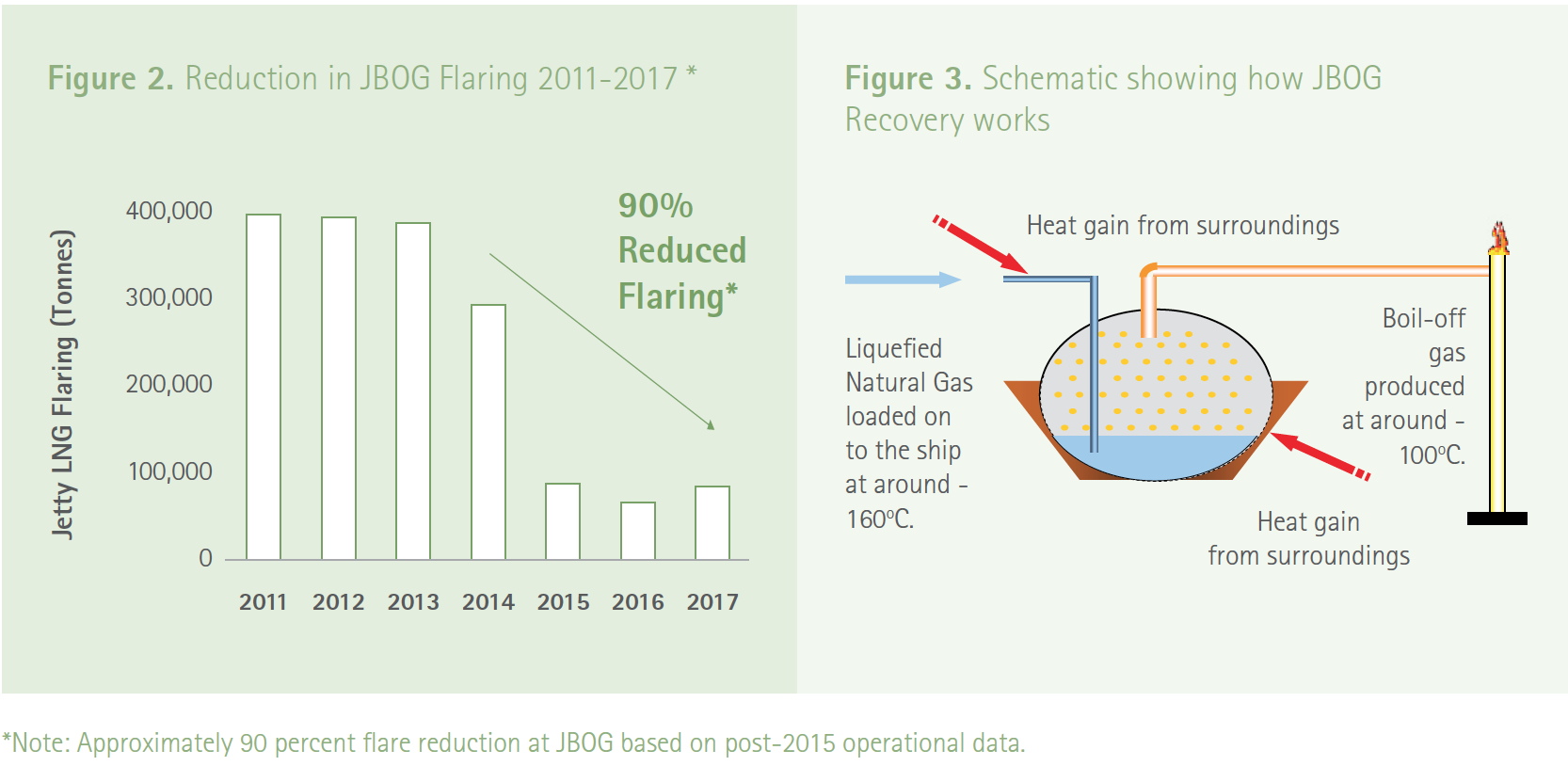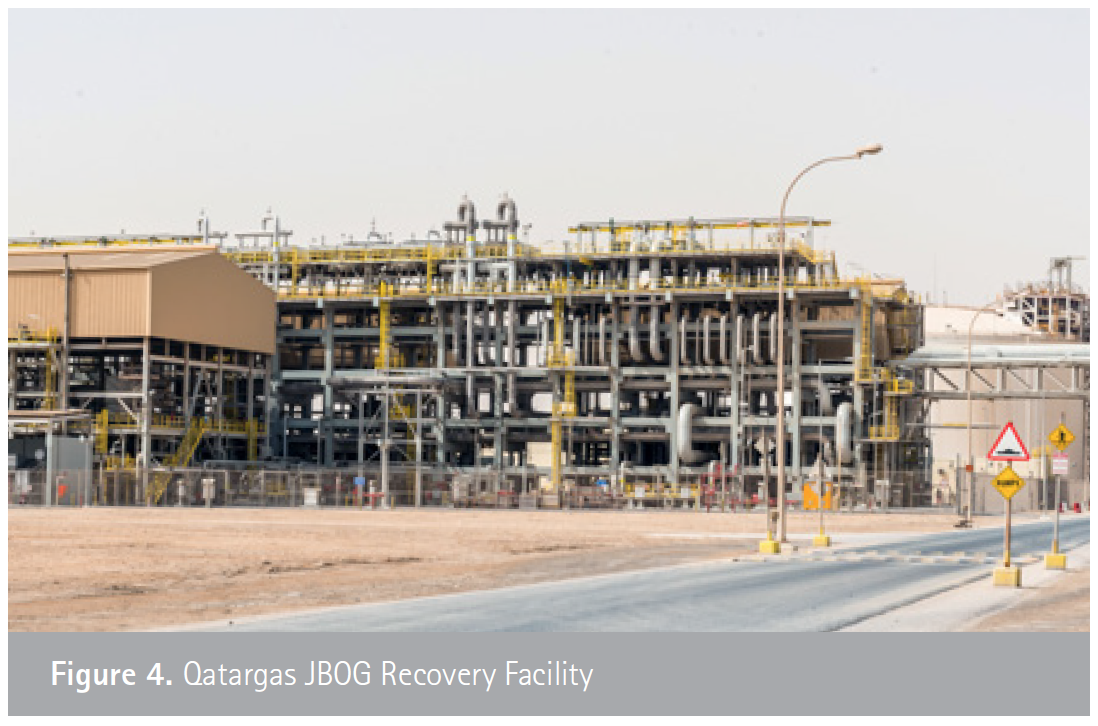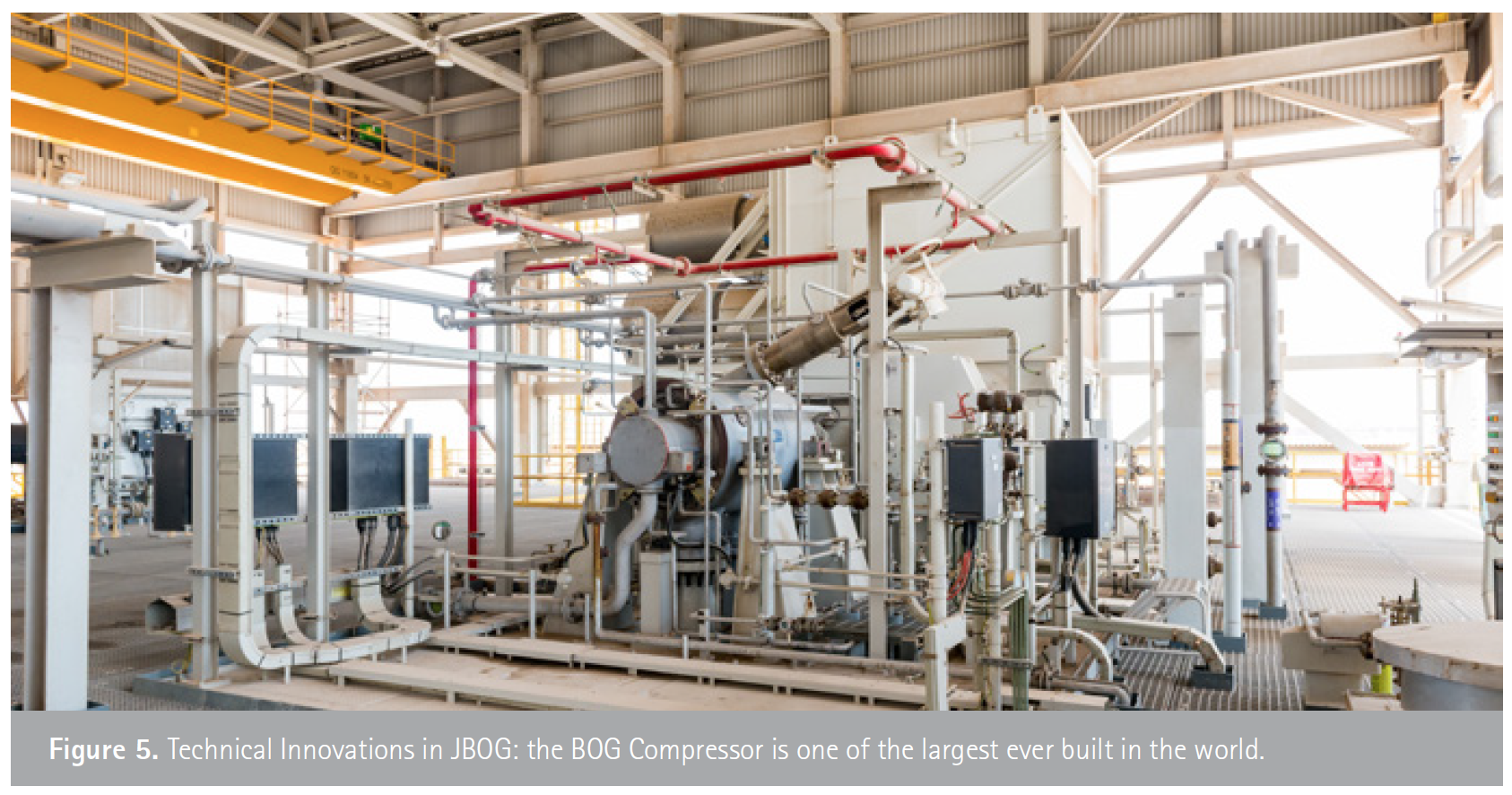Qatargas Jetty Boil-Off Gas (JBOG) Recovery Facility [GGP]

.png) The Qatargas Jetty Boil-Off Gas (JBOG) recovery facility is a unique environmental initiative. It recovers boil-off gas previously being flared during Liquefied Natural Gas (LNG) ship loading from the six berths operated by Qatargas at Ras Laffan Port in Qatar.
The Qatargas Jetty Boil-Off Gas (JBOG) recovery facility is a unique environmental initiative. It recovers boil-off gas previously being flared during Liquefied Natural Gas (LNG) ship loading from the six berths operated by Qatargas at Ras Laffan Port in Qatar.
|
Advertisement: The National Gas Company of Trinidad and Tobago Limited (NGC) NGC’s HSSE strategy is reflective and supportive of the organisational vision to become a leader in the global energy business. |
The $1 billion facility, built and operated by Qatargas, was commissioned in October 2014, collects the boiloff gas, compresses it and sends it back to the Qatargas facilities to be either utilized as fuel gas or converted back into LNG. It is one of the largest environmental initiative of its kind in the world.
The JBOG Facility is one of the cornerstones of Qatargas’ overall flare management strategy and is instrumental in the company’s drive to reduce and maintain total flaring at regulatory target levels in the long term in order to protect the environment. The project, currently recovers the equivalent of 0.6 million tonnes per annum of LNG based on 90% design recovery efficiency during normal operations. In flaring terms, this translates to approximately 29 billion standard cubic feet (BSCF) per annum that would otherwise have been flared during LNG ship loading, which is enough natural gas to generate ~750 MW of energy that is sufficient to power approximately 300,000 homes.
In terms of Greenhouse Gas (GHG) emission reductions, the above flare recovery amounts to approximately 1.6 million tonnes of CO2 per annum, which excludes indirect emissions resulting from JBOG facility operation such as electrical power utilized by JBOG compressors.
THE JBOG CONCEPT
As the -160°C LNG is loaded onto the LNG carriers, around 1% of the LNG evaporates as boil-off gas (BOG) due to the difference of temperature between the LNG and the ship’s tanks.
The BOG is then collected from the ship and transferred to a Central Compression Area (CCA) via large diameter stainless steel pipelines.
At the CCA, the collected gas at virtually atmospheric pressure is compressed to 47 bar in three stages and then either sent to the LNG trains for use as fuel gas or converted back into LNG.

 FACILITY DESIGN
FACILITY DESIGN
The gas is taken off the LNG ships during loading, sent via pipelines to the CCA, compressed and sent to the LNG producers. The boil-off gas is discharged from the ships at cold temperatures ranging between -80oC to -100oC. The pipelines material needs to be stainless steel to withstand the low temperature gas. The result is a network of large diameter (34-60 inch diameter) stainless steel pipelines which carry the gas from the ships to the CCA. Tie-ins are needed at each of the six LNG berths at the connection between the ship loading arms and the existing flares.
JBOG comprises of two compressor trains, each sized for 50% of the rated capacity of handling 163 tonnes of JBOG per hour. There are three main buildings in the CCA. ITR 65 houses the control equipment, as well as a small number of office spaces. The 132kV Substation building contains the switchgear for the 132kV power received from Kahramaa.
An interesting feature of JBOG construction is that the CCA has been built on reclaimed land. About 1,500 piles had to be drilled to carry the load of the facilities. The piles are around 9m deep, and around half of the pile length is within the groundwater table.
The seawater can cause severe and rapid corrosion of the steel in the piles unless it is protected. JBOG has an extensive cathodic protection system, which uses sacrificial magnesium anodes to create a galvanic cell diverting the flow of current from the piles to these sacrificial anodes, thus protecting the piles.
TECHNICAL INNOVATIONS
There have been several technical innovations on the facility. The first stage BOG compressors designed and built by GE Nuovo Pignone are some of the largest ever built in the world handling a volume of 163 tonnes per hour coupled with low suction pressure. The gas taken from the LNG ships warms up as it travels to the compressors in the Central Compression Area. This, coupled with the drop in pressure, causes the gas to expand, thus needing a large volume compressor. The inlet gas conditions vary substantially with respect to the temperature and hence, the large volume. The Low-Pressure compressor has inlet guide vanes to ensure that the compressor operates efficiently at all inlet volumes. The design of the inlet guide vanes at varying inlet temperatures ranging from -140°C to ambient temperature was a huge challenge. Due to the very low pressure drop allowed between the ship and compressor, there was no existing check valve design which could work with those limitations.
Qatargas engineers worked with several valve manufacturers, reviewed computational flow dynamics (CFD) models to come up with a new design of the valve flap. The resultant lightweight titanium flap uses aerodynamics to reduce the drag, and increase lift.
The JBOG engineering team did not just rely on modeling, and arranged for the first valve to be tested at a specialised valve testing shop to ensure that the valve met the design conditions.

SUMMARY
The JBOG facility is a landmark project for the State of Qatar, underlining the demonstrated commitment of the Qatari people to balance industrial development with care for the environment. The huge investment in JBOG by Qatar Petroleum and its shareholders helps optimize energy use and reduce a sizeable amount of carbon emissions from our operations.
Qatargas is proud and privileged to build and operate this flagship Qatari facility which helps meet aspirations of Qatar National Vision (QNV) 2030 related to Environmental Protection and Sustainability and supports Qatar’s aim to reduce climate changing carbon emissions.
This Case Study is an excerpt from Corporate Social Responsibility: Best Practice Guidelines, published by the Abdullah Bin Hamad Al-Attiyah Foundation for Energy & Sustainable Development (The Al-Attiyah Foundation)
The statements, opinions and data contained in the content published in Global Gas Perspectives are solely those of the individual authors and contributors and not of the publisher and the editor(s) of Natural Gas World.




